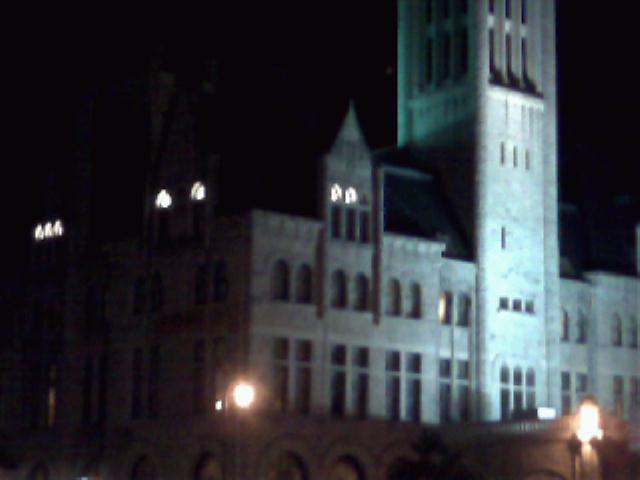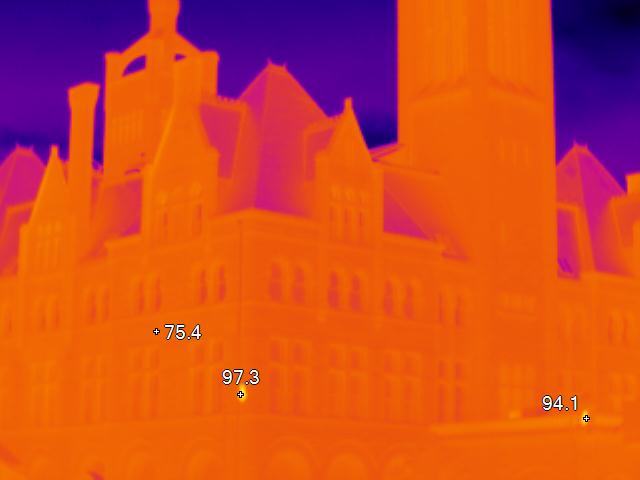 Wow, is it really day 3 already? I guess so as the day started off with a pop quiz to prepare us for the next two days actual tests. Shoot, I might need to remember some of my own test taking tips like, make sure you fully read the question. Yep, I got dinged on 2 questions that way today in the 1st & 3rd test – oops. I can say one reason why time does seem to be flying, is that we have a pretty good instructor named “Van” from the Snell Group that loves to keep you on your toes.
Wow, is it really day 3 already? I guess so as the day started off with a pop quiz to prepare us for the next two days actual tests. Shoot, I might need to remember some of my own test taking tips like, make sure you fully read the question. Yep, I got dinged on 2 questions that way today in the 1st & 3rd test – oops. I can say one reason why time does seem to be flying, is that we have a pretty good instructor named “Van” from the Snell Group that loves to keep you on your toes.
The k Value & Conduction?
In the building trades, we generally only worry about R & U values. When dealing with Infrared and learning about conduction (heat moving through a physical medium) they have added in the k value & Fourier’s Law: Q (Heat Energy) = k (thermal conductivity value) divided by L (thickness) times A (area) times Delta T (temperature difference). In simple terms:
- The R Value measures the resistance of an item to allow heat to pass through an item (R19 fiberglass has an R Value of 3.45 per inch)
- The U Value measures the resistance for an entire assembly(generally) like a window with its associated frame, mullions, etc… or a wall with doors, windows, framing, etc… to allow heat to pass through
- The conversions are well known as U = 1/R & R = 1/U
- While the R19 FG above has a U Value of .0526 when you do the entire wall assembly (no doors or windows in this example) you will typically have a U value of .072 or overall R value of 13.888
While the conversion factor from R to k is the same as going to U (R = 1/k) assuming you are using the 1” value), the k value only takes into account the thermal conductivity of an item & ignores the radiation & convection levels that also affect it, so in the Building Science field it generally is just a nice little diversion. With that said, if I was working at a steel mill, foundry, etc… it would play a more important roll, when calculating out the thickness certain items need to be or spotting possible problem area’s that maybe developing when reviewing an image.
Convection:
Convection is an important factor in Thermography as any air moving over an item can dramatically alter the surface temperature. As we are measuring the surface temperature, it pays to be aware of any fans, wind blowing, etc… as it all plays a factor on what we see. One of the rules of thumb they use is that at 10 mph the Delta T (the difference between the ambient temperature to the observed items temperature) could be off by half and at 15 mph you are looking at the temperature being reduced by 2/3. While this does help cool the item off, it might be masking an issue that you are trying to prevent.
The Camera’s & IFOV:
We then jumped ahead in the book to mainly cover the IFOV, which allowed us to take the final 2 pop quizzes (seriously you don’t want pop quizzes on a real test day – do you?). Before getting to that we got a quick lesson on the lens, why we have 14 bit cameras, why the factors we discussed earlier in the class impact what the camera sees and the calibration tests that are done (MRTD, SRF & reference tests). This all led us to the final portion on IFOV or Individual Field of View and how to calculate it. The IFOV basically covers what is the smallest detail you can see at a given distance. The only time this really starts coming into play is for S&R, scanning power line’s / a roof from a plane, or checking substations – just how far away can we be to spot an item & then move into to get a detailed picture. For a great description of this, the best description I have found is on Fluke’s Blog.
Today’s Trivia:
What substance conducts heat 10 times better than copper, but doesn’t transmit electricity? (Van might shoot me for giving this one away, but it is interesting & very trivia worthy)
Yesterday’s Trivia:
Sorry, I didn’t exactly play fair yesterday… Fluke has a great feature where you can snap a visible image, an Infrared only image, or a combination. I normally take my images in combination mode which helps me get it focused properly (even though that one was slightly off). Here is a quick shot of the visible portion only, followed by the Infrared only with the palate changed to make viewing a little easier based on the question.



OK, the hottest hotspot are the outside lights, which makes sense. But in yesterdays photos, the lights shining through the windows appeared, not quite as intense as the exterior lights, but almost. Do you happen to have any temperatures recorded for those areas of the photo?
Sure & I will be glad to send it to you if you like. Quick answer – from left to right towards the top – 3 windows are between 77.8 to 78.3 , the next two are 78.3 & 77.6 respectivelly, 77.2 for the next & the tower spots are all around 76. At the base of the tower the unit on the roof is at 80
One of the interesting things in class today was an explanation on why we can look & play with the spans, levels & emmisivity of captured images is because of all the data captured with the 14 bits. If the first one was an 8 bit picture we wouldn’t be able to do that
OK, the hottest hotspot are the outside lights, which makes sense. But in yesterdays photos, the lights shining through the windows appeared, not quite as intense as the exterior lights, but almost. Do you happen to have any temperatures recorded for those areas of the photo?
Sure & I will be glad to send it to you if you like. Quick answer – from left to right towards the top – 3 windows are between 77.8 to 78.3 , the next two are 78.3 & 77.6 respectivelly, 77.2 for the next & the tower spots are all around 76. At the base of the tower the unit on the roof is at 80
One of the interesting things in class today was an explanation on why we can look & play with the spans, levels & emmisivity of captured images is because of all the data captured with the 14 bits. If the first one was an 8 bit picture we wouldn’t be able to do that
Sure & I will be glad to send it to you if you like. Quick answer – from left to right towards the top – 3 windows are between 77.8 to 78.3 , the next two are 78.3 & 77.6 respectivelly, 77.2 for the next & the tower spots are all around 76. At the base of the tower the unit on the roof is at 80
One of the interesting things in class today was an explanation on why we can look & play with the spans, levels & emmisivity of captured images is because of all the data captured with the 14 bits. If the first one was an 8 bit picture we wouldn’t be able to do that